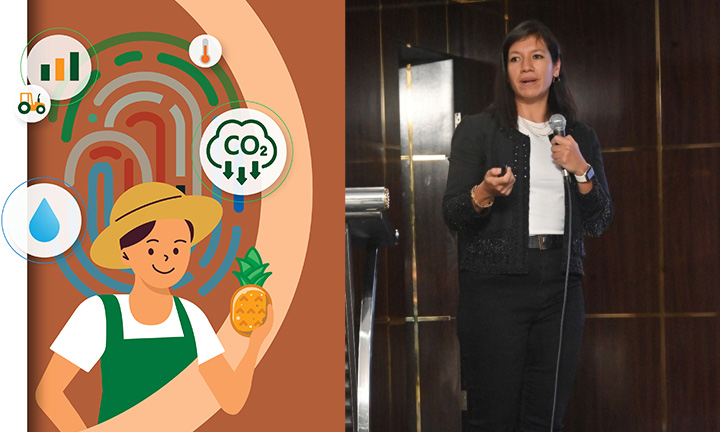By Maria Hernández Lagana and Christian Cangao
The Food and Agriculture Organization of the United Nations (FAO) and the International Tropical Fruit Network (TFNet) jointly organized the workshop ‘Measuring carbon and water footprints in tropical fruit value chains’ on 23 October 2024 in Kuala Lumpur, Malaysia.
The workshop was conducted as a side event following the conclusion of the 2024 International Symposium on Tropical Fruits.
It was led by María Hernández Lagana, in the framework of the Responsible Fruits Project managed by the Economics and Trade Division of the UN-FAO. The workshop aimed to introduce stakeholders in tropical fruit value chains to FAO methodologies and tools developed to measure carbon and water footprints in supply chains, highlighting how these resources can help producers and businesses enhance the sustainability and resilience of their operations.
Carbon footprint is measured by calculating the total amount of greenhouse gases (GHG) that are generated by human activities. On the other hand, water footprint is measured by potential environmental impacts related to water use such as shortages from overconsumption during day-to-day operations and reduction of water quality.
The event also had the purpose to present the technical guide to “ Hernández Lagana also discussed the steps to conduct verifiable carbon and water footprint studies, with the help of the guide developed by FAO.
Calculating these footprints can enhance the management of farm inputs and reduce operational costs. Reducing the environmental impact of operations can also enhance brand image and reputation, which leads to market access in premium international markets and consumers. Ultimately, assessing these footprints to better manage GHG emissions and minimize impacts on water quantity and quality will strengthen the sustainability and resilience of value chain operations.
As an example, Hernández Lagana presented the case of the National Banana Corporation in Costa Rica which measured their water footprint that helped them devise a water management plan that introduced various measures that led to 55% less water consumption.
You can learn more about this work on:
- Responsible Fruits Project website: https://www.fao.org/markets-and-trade/responsible-fruits/en
- Guide ‘Measuring carbon and water footprint in pineapple value chains’: https://doi.org/10.4060/cd1688en
- Carbon and water footprint tool in the banana sector: https://www.fao.org/world-banana-forum/projects/carbon-and-water-footprint-cwf-initiative/carbon-and-water-footprint-cwf-tool/en/Ex-ACT tool: https://www.fao.org/in-action/epic/ex-act-tool/suite-of-tools/ex-act/en/

